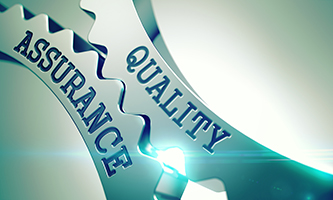Does the DOT require EBTs to be recalibrated every 2 years?
Very recently I paid a visit to a customer at an occupational health clinic to demonstrate a new device. During our visit, one of the meeting attendees compellingly posed the question, “Does the DOT require the operator to send their EBT back to the manufacturer every two years to be recalibrated”. Apparently the question was recently posed to him by a colleague who was adamant about the existence of such a requirement.
To be thorough, I decided the best way to engage in the conversation was to cover a couple of angles. My first response was to clarify the use of the word “recalibrated”. Our experience is that many people confuse the term “calibration” with the term “accuracy check.” I explained that a calibration is a procedure designed to bring an Evidential Breath Testing device back into an acceptable accuracy tolerance range. I pointed also to Intoximeter’s (the manufacturer of the device in question) Quality Assurance Plan (QAP) which states that a calibration is only required following a failed accuracy check. Therefore, a failed accuracy check was the only time a “calibration” was required and that “recalibration” outside of that event is not merited by the manufacturer or the DOT.
What Does the QAP Say?
There are well over 100 evidential breath testing devices appearing on NHTSA’s Conforming Products List. As such, I cannot speak to the maintenance requirements outlined in every manufacturer’s QAP. Neither does the DOT necessitate some overarching maintenance requirement applicable to all EBT devices. For that reason, section 40.233 of the federal regulations defers to the manufacturer’s QAP for all maintenance requirements and recommendations. Paragraph (2) of section 40.233 requires manufacturers to have a QAP, which specifies the inspection, maintenance and calibration requirements and intervals for the EBT. Additionally, paragraph (5) says operators must ensure all inspections, maintenance and calibrations be performed by the manufacturer or someone certified by the manufacturer. So, the only DOT mandate is that operators follow the requirements of the manufacturer’s QAP.
Here is a snippit from Intoximeters’ QAP, which is very similar for every one of their instruments. This is an example of how their QAP states the recommendations and requirements for inspection, maintenance and calibration of the EBT. Notice that some items are required, and others are recommended. (Note: Not every manufacturer has the same requirements and recommendations as this QAP.)
Requirement
• The instrument must be calibrated when the result of an accuracy check differs by more than + or – .005 from the expected result of the standard gas sample. In other words, any accuracy check result outside of the acceptable tolerance range means the instrument has failed its accuracy check and therefore must be calibrated to bring the instrument back into accuracy range.
Recommended
• It is highly recommended that the instrument be inspected by a certified technician at least once every two years in service
And there you have it! There is NO DOT requirement to have your instrument maintained or even inspected every 2 years. It is a recommendation…and a fairly good one, depending upon the volume of testing being performed and some other variables having to do with Return on Investment. Perhaps that is another blog article altogether.
The short answer to the customer’s question, “Does the DOT require EBTs to be recalibrated every 2 years?” The only time a calibration is required for an Intoximeter instrument is when the instrument fails an accuracy check.

